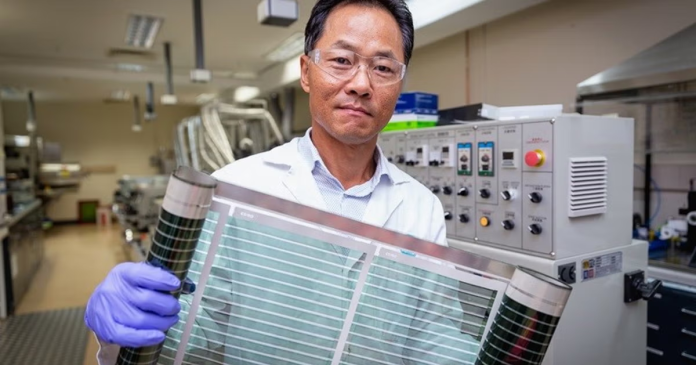Researchers at Australia’s Commonwealth Scientific and Industrial Research Organisation (CSIRO) have achieved a significant breakthrough in solar energy technology.
They’ve developed next-generation solar cells that can be printed using a roll-to-roll process, setting a new standard for efficiency in printed solar technology.
Unlike traditional solar panels made from rigid silicon, these innovative solar cells are printed on thin, flexible plastic films. This unique feature makes them lightweight, portable, and highly adaptable to various applications and environments.
The flexibility and portability of these printed solar cells open up a wide range of potential uses. For example, they can be used in remote mining sites where transporting heavy equipment is challenging.
Their portability makes them ideal for integrating into portable power systems to provide renewable energy solutions for mining operations.
The compact and flexible design of these solar cells makes them suitable for powering small electronic devices such as smartphones, tablets, and wearable gadgets.
They could potentially be integrated into the design of these devices to provide a sustainable energy source for everyday use.
These printed solar cells can also be incorporated into the building materials used in urban construction projects. They could be used to create solar-integrated facades, rooftops, and other architectural elements, allowing buildings to generate their own renewable energy while reducing their environmental footprint.
During emergency situations such as natural disasters, access to electricity can be limited. These flexible solar cells can be quickly deployed to provide temporary power solutions for emergency shelters, medical facilities, and communication systems, helping to support relief efforts and improve resilience.
The versatility of these printed solar cells makes them suitable for a wide range of specialized applications where conventional solar panels may not be practical or feasible. This includes outdoor events, remote scientific research stations, marine and aviation applications, and more.
The achievement of this new efficiency milestone by CSIRO and its international team of researchers represents a significant step forward in the development and commercialization of printed solar technology.
By making solar energy more accessible, adaptable, and versatile, these innovative solar cells have the potential to revolutionize the way we harness and utilize renewable energy in various sectors and applications.


